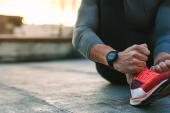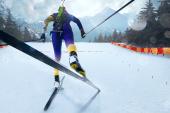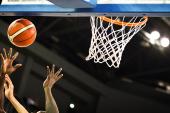Sudden Cardiac Death in Athletes Is Rare, but Affects Black Population More
The reason for the disparity is unknown but is not believed to be genetic. Female athletes appear to be at the lowest risk.

A new review is highlighting the risk of sudden cardiac arrest and death in competitive and recreational athletes, including older adults who exercise or participate in sports for fun or to improve physical fitness.
Importantly, the review points to significant disparities in risk between male and female athletes, as well as Black athletes, a group that has a “higher risk (up to a fivefold) of sudden cardiac arrest and death compared with white athletes across all ages and both sexes,” write researchers led by Jonathan Kim, MD (Emory University School of Medicine, Atlanta), and Aaron Baggish, MD (Lausanne University Hospital, Switzerland).
“We know that there is still a dramatic difference between male Black athletes and male white athletes,” co-author Matthew Martinez, MD (Morristown Medical Center, NJ), told TCTMD. “In fact, disparities among Black athletes compared to white athletes [are seen] across the board, with male Black athletes, basketball players, being at the highest risk, then female Black athletes. White male athletes are next and then [white] women at the bottom—they seem to be at the lowest risk.”
Martinez, director of the Atlantic Health System’s sports cardiology program, said it’s unclear why Black athletes are more susceptible to sudden cardiac arrest than other groups. “We know that it’s not genetic,” he said. “They are not at risk because of who they are or where they’re from. We think that this is more related to social determinants of health.”
The new paper, drafted on behalf of the American College of Cardiology Sports and Exercise Council and published online in the Lancet, points to several high-visibility sudden cardiac death cases over years. These include Jim Fixx, who helped kick-start the recreational running boom in the 1970s and who died suddenly while running at age 52, and Hank Gathers, a high-level college basketball prospect who died on the court at age 23. More recently, European footballers Fabrice Muamba and Christian Eriksen both experienced sudden cardiac arrest during games but survived due to prompt resuscitation.
To TCTMD, Martinez said that when assessing patients at risk for sudden cardiac death, prior practice had been to disqualify athletes if something was picked up in screening.
“In the old days, we used to say if we found something, we’d disqualify you—as we’d say, ‘When in doubt, kick them out. Don’t let them play, it’s safer for us,’” he said. “The doctors feel better about it, but the athletes are left without anything else to do. Now, we have changed that mantra and that mantra is now: identify, risk stratify, and then come up with a plan for safety.”
Data on the exact number of sudden cardiac arrests and deaths (numerator) among athletes is unknown because mandatory reporting is rare. Additionally, there are varied assumptions made when estimating the total number of people at risk (denominator) when calculating the incidence of cases. In contemporary studies with reasonably accurate assessments of the numerator and denominator, the incidence of sudden cardiac arrest and death ranges between 1 in 15,000 person-years to 1 in 64,000 person-years in young competitive athletes, say experts.
Screening Young and Old Athletes
In their review, the experts point out that athletes span the entire age spectrum, from those still physically developing and maturing to older Masters athletes (≥ 35 years). There are important distinctions between these age groups, particularly when it comes to the causes of sudden cardiac death or arrest.
For those 35 years and younger, sudden cardiac death or arrest is linked to inherited, structural, and congenital forms of heart disease, such as hypertrophic cardiomyopathy and coronary artery anomalies, as well as genetic arrythmias, such as long QT syndrome or Wolff-Parkinson-White syndrome. When resources are available, the addition of 12-lead ECG screening can improve the sensitivity of the preparticipation evaluation that usually relies on a targeted patient history, physical examination, and family history. There are risks to adopting the ECG as part of screening, particularly in that it may increase downstream referrals and testing, which can lead to inappropriate restrictions due to false-positive results.
For older athletes, the risks are more frequently attributable to acquired conditions, such as atherosclerotic coronary artery disease. If one or more cardiovascular risk factors are detected during preparticipation screening, several US organizations and the European Society of Cardiology recommend a 12-lead ECG and maximal-effort stress testing before clearance to participate.
“Under 35, you can rely a little heavier on ECG criteria and abnormal [echocardiography],” said Martinez. “As you get to be 35 and 40, then it really boils down to kind of a bread-and-butter cardiac risk [assessment].”
ORCCA Registry
As the field of sports cardiology matures, experts are trying to get a better handle on the prevalence and outcomes of athletes who participate despite conditions that predispose them to heightened risks of sudden cardiac arrest. For example, Jared Butler, a basketball player with the Washington Wizards in the National Basketball Association, has continued to play despite having a diagnosis of hypertrophic cardiomyopathy. So has basketball player Keyontae Johnson, who collapsed on the court in 2020 but was resuscitated. He was later diagnosed with acute myocarditis.
The ongoing Outcomes Registry for Cardiac Conditions in Athletes (ORCCA) will gather data on competitive athletes with a diagnosed cardiac condition and follow them long-term, said Martinez.
“I think athletes need a better dashboard to be able to make risk assessments on their own,” he said. “That’s really what shared decision-making is all about. I don’t get to tell you what you get to do. I get to advise you what your risk is, and if you say, ‘I want to play anyway, I really want to exercise anyway,’ then as long as you’re willing to take the risk and you understand the risk, then I’m okay with engaging [you] for that risk.”
In addition to primary prevention, the experts emphasize the importance of emergency action plans where people are competing or working out. The core elements include the ability to recognize sudden cardiac arrest, availability of high-quality CPR, and immediate access to an automated external defibrillator (AED). Such plans should be subject to regular reviews and practice drills.
“We know that AEDs, rapid CPR, that’s what saves lives in athletes,” said Martinez. “We have to make sure that the environments are safe so that the athletes can continue to participate.”
Michael O’Riordan is the Managing Editor for TCTMD. He completed his undergraduate degrees at Queen’s University in Kingston, ON, and…
Read Full BioSources
Kim JH, Martinez MW, Guseh JS, et al. A contemporary review of sudden cardiac arrest and death in competitive and recreational athletes. Lancet. 2024;404: 2209-2222.
Disclosures
- Baggish reports grants with the American Heart Association and the National Football League Players Association; consulting fees for US Olympic and Paralympic Training Centers, the US Soccer Federation, and the US Rowing Federation; and meeting travel costs for FIFA and World Rowing.
- Kim reports grants from the National Institutes of Health and the National Heart, Lung, and Blood Institute.
- Martinez reports speaking fees from Bristol Myers Squibb, Cytokinetics, Viz.ai.





Comments